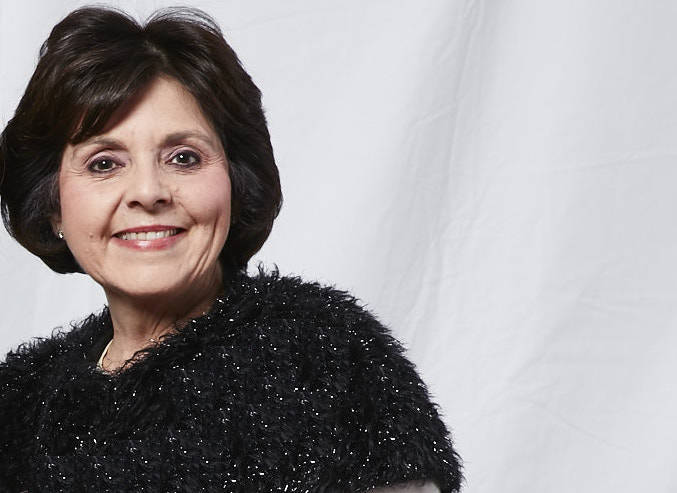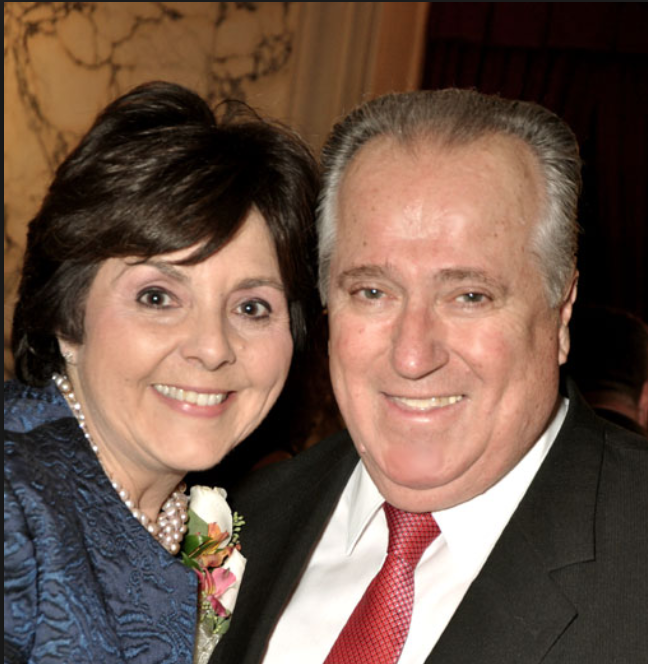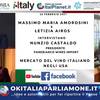Linda Carlozzi. An Extraordinary Italian American Woman
Both of Linda’s parents are from Campodipietra, a small village in the Province of Campobasso, Molise. Her mother and all of her siblings were born in the United States but the family returned to Campodipietra when her mother was just 11 months old. Linda’s dad instead was born and raised there and that’s where he were to meet her mom. He left his entire family in Italy to marry her and they came back to the US in 1953 to build their family here.
But the family split didn’t last too long. In the late 1960’s her father’s brother, sister-in-law and their two children came and joined them in the US. This is how the Carlozzis’ American journey begun. “Ours was a very tight knit family,” Linda tells me. “Our holidays, baptisms, communions and graduations were all celebrated ‘Italian-style,’ surrounded by family and delicious Italian food—homemade, of course!”
You grew up in New Britain, CT. Did you live in an Italian neighborhood?
Absolutely! New Britain was heavily populated with Italians and Polish immigrants. Many immigrants from Campo di pietra moved to New Britain and neighboring towns, and our neighbors were paesani too! Our neighbor’s mother was a woman named Angela Maria.
Because my mother worked as a seamstress andI was the last of three children, Angela Maria would take care of me after school. She was very much like my nonna and spoke only dialect. As you can imagine,
I quickly learned to speak Italian dialect from Campodipietra. In fact I think I may have spoken dialect before I spoke English. I learned so much about Italy and our family from Angela Maria. She lived to be 102 years old; she looked like the most beautiful befana and told me the most wonderful stories about Campodipietra. She also taught me to crochet, something I still enjoy today.
And when you went to college, didn’t you risk losing that connection to your roots? Not really. Actually, it wasn’t until my college years that I really connected with my Italian family! I went to Fordham University, and there I met so many friends who grew up as I did—first generation Italian Americans.
I felt very much at home at Fordham. I decided to major in communications and minor in Italian studies. My father told me, “If you think you know the Italian language and this will be easy for you—you are wrong. You speak dialect, not Italian, and the language is not an easy one.” My father was right, of course, but I set out to prove to him that I could do it. And I managed to convince my parents that I should take the Fordham
Language course in Italy over the summer. It was 1983 and that trip changed the trajectory of my life. Meeting my family in Italy for the first time and seeing Rome, Tuscany, the Amalfi Coast and Campobasso left an indelible mark on me. I devoured every square foot of this magnificent country, my parent’s patria. After that, I went back to Italy as often as I could.
So that’s when you ‘became’ Italian. But you are also American of course. What is it like to have a dual identity? And how much does this affect your daily life? Well, being Italian American affects every fiber of my being. My parents were fiercely proud of their Italian heritage. When the laws changed, allowing dual citizenship, my father was quick to regain his Italian citizenship. I suspect to an Italian, there is no question that I am American.
Yet to my friends and me, there is no question that I am Italian. Being Italian American is 99% of my daily life. So much of what I do has been influenced by my ethnicity, from my interests to my friends to my involvement in the Italian American community and even to my clients, many of whom are Italian. I feel truly blessed to bridge both worlds and to understand the cultural differences and the nuances of both worlds.
You currently sit on NIAF’s board of directors. When did you first find out about the organization and how did it become so important to you? Soon after my trip to Italy, I became very involved in Italian American organizations. At Fordham University, I was a founding member of a young Italian-American organization called FIERI. I also became involved in the National Organization of Italian American Women (“NOIAW”).
Then I went to Catholic University Law School in Washington, DC, where NIAF is headquartered. I was one of the first recipients of an NIAF Law Scholarship and I worked as an intern in the NIAF offices. But it wasn’t until I moved to Philadelphia in 1991 that things really took off. There, I was fortunate to meet Matthew DiDomenico, a successful businessman who was on the Board of NIAF; he became my mentor and sponsor and remains my friend to this day. He is largely responsible for my nomination to the NIAF Board of Directors.
The world of Italian-American organizations has long been dominated by men. At least in the past. What was it like to be a woman at NIAF? It has been a challenge for women in many Italian American organizations and I am not sure how to explain that. But I think NIAF was at the forefront early on. Very influential women sat on its board, beginning with Geraldine Ferraro, Matilda Cuomo, Nancy Pelosi, Patricia de Stacy Harrison and Maria Bartiromo. One of my mentors on the NIAF Board was Judge Marie Garibaldi, who recently passed away, sadly. She was the first woman named to the Supreme Court of New Jersey.
Official Italian-American organizations have had an increasingly difficult time reaching out to young people. Do you think your children, grandchildren or other young Italian Americans in your family are interested in cultivating their dual identity? What can NIAF do to get closer to them, to get them more involved? It’s true. The children of second and third generation Italian Americans are more removed from their Italian heritage. But I think NIAF has some wonderful programs to cultivate young people. NIAF’s “Voyage of Discovery” program seeks to strengthen young Italian Americans sense of identity by creating bonds between them and the culture and heritage of Italy.
Students selected are offered the opportunity to visit Italy for two weeks. I have met some ofthe students who have traveled to Italy on this program. They are excited to visit the country and energized by all that Italy offers.
In your opinion, has Americans’ perceptions of Italian-American culture changed over the years? How is it seen today with respect to the past?
Stereotypes persist; I experienced them firsthand as a student and a young lawyer. However, as a community we have made great strides in presenting positive images of our culture, and NIAF has been at the forefront of that effort. But I believe there is still much work to be done.
The recent attacks on the Columbus Day celebrations are one glaring example of the erosion of our culture. Italo-American organizations need to work together to promote a positive image of Italian-American culture.
Neither have Italians in Italy always had an easy relationship with Italian Americans. What do we need to do to get these two Italian worlds separated by an ocean to better engage one another? I think stereotypes of Italian Americans play a significant role in the perceptions Italians have of Italian Americans. The many Italians who immigrated to the US in the 1940s-60s brought the Italy they knew with them.
Yet Italy is a very different country today. We grew up with parents who held onto the older culture and my cousins in Italy grew up very differently. Therein lies the difference. We need to work harder to promote dialogue between these “two Italian nations” and, once again, promote a positive image of Italian Americans. I think the media plays a large role in bridging such divides.
What’s in store for NIAF? Are there projects you’re particularly attached to?
NIAF is on the precipice of big change. Our President, John Viola, brings passion, energy and youth to NIAF. He has bold new ideas and he is steadfastly committed to ushering NIAF into the next generation.
We are already seeing the impact of his changes. Like John, I am committed to bringing young people into the fold, to share with them my love and passion for our rich culture and history. Personally, I am especially committed to the scholarship program that I myself benefited from as a student.
Any dreams in your pocket?
I want to see the first woman (not me!) elected to Chair of NIAF. I believe that day is right around the corner.











































i-Italy
Facebook
Google+
This work may not be reproduced, in whole or in part, without prior written permission.
Questo lavoro non può essere riprodotto, in tutto o in parte, senza permesso scritto.